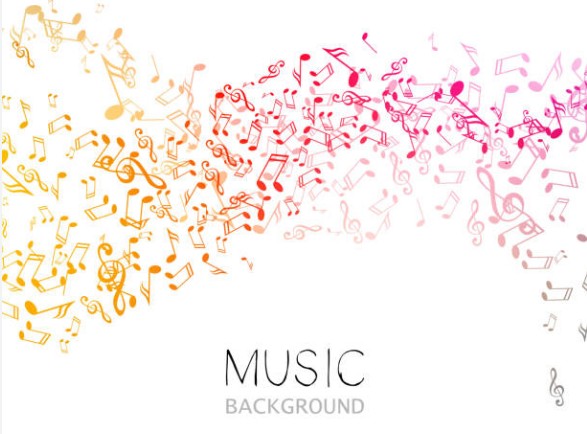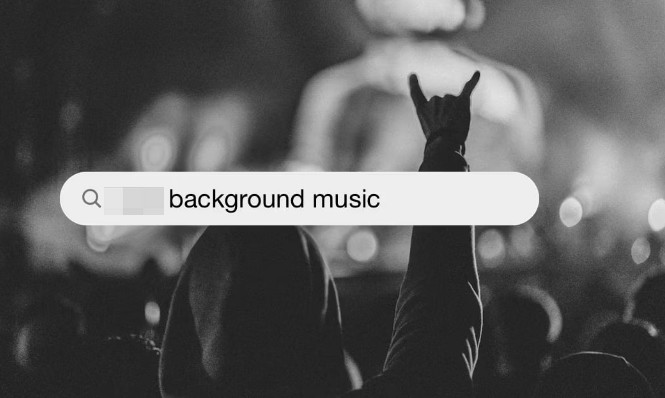Unlock the Power of Pixabay Music for Your Website Background
What is Pixabay Music?

Pixabay Music is a fantastic resource that provides users with a wide variety of high-quality music tracks that can be used for free in both personal and commercial projects. This platform offers a diverse selection of music genres, ranging from soothing ambient tunes to energetic electronic beats. By utilizing Pixabay Music, website owners can enhance the overall visitor experience by adding a touch of creativity and emotion to their online content.
One of the key advantages of Pixabay Music is its ease of use. Users can simply browse through the extensive collection of tracks, select the ones that best fit their website’s theme or mood, and easily download them for immediate use. Whether you are looking to create a relaxing atmosphere for your blog or add an upbeat soundtrack to your e-commerce site, Pixabay Music has got you covered.
In addition to providing a wide range of music options, Pixabay Music also ensures that all tracks are royalty-free and can be used without worrying about copyright issues. This makes it a great choice for website owners who want to enhance their online presence without breaking the bank.
How to Access Pixabay Music

Pixabay Music offers a vast library of high-quality tracks that you can use for free on your website. Accessing this treasure trove of music is simple and hassle-free. To get started, head over to the Pixabay website and navigate to the “Music” tab. From there, you can browse through a wide range of genres, moods, and instrumentals to find the perfect track for your website background.
Once you have found a piece of music that resonates with the vibe of your website, simply click on the download button to add it to your collection. Pixabay Music allows you to download tracks in various formats, making it easy to integrate them into your website seamlessly.
In addition to individual track downloads, Pixabay Music also offers curated playlists that you can use to enhance the auditory experience for your website visitors. These playlists are thoughtfully curated to suit different themes and moods, ensuring that you find the perfect music for your website background.
By accessing Pixabay Music, you can elevate the user experience on your website and create a more engaging environment for your visitors. So why wait? Dive into the world of Pixabay Music today and unlock the power of music for your website background.
Benefits of using Pixabay Music
Including Pixabay Music on your website can offer numerous benefits to both you and your visitors. One of the primary advantages is the vast library of high-quality and royalty-free music that Pixabay provides. This means you can easily find the perfect track to complement the tone and style of your website without worrying about licensing issues.
Moreover, Pixabay Music allows you to enhance the overall user experience of your website. Music has the power to evoke emotions, establish connections, and create memorable moments for your visitors. By incorporating carefully chosen music into your website, you can create a more engaging and immersive environment that keeps users on your site longer.
Another benefit of using Pixabay Music is the flexibility it offers in terms of customization. With a variety of genres, moods, and lengths to choose from, you can easily tailor the music to suit your website’s specific needs and branding. Whether you want a lively track to energize your landing page or a soothing melody to accompany your blog posts, Pixabay Music has you covered.
Furthermore, utilizing Pixabay Music can also help improve your website’s SEO. By providing a multimedia experience with music, you can increase user engagement and dwell time, which are positive signals for search engines. This can potentially lead to higher rankings and increased visibility for your website in search results.
Choosing the right music for your website
When selecting music for your website, it’s essential to consider the overall tone and message you want to convey to your audience. The right music can enhance the user experience, evoke emotions, and create a lasting impression on visitors.
First and foremost, think about the purpose of your website and the feelings you want to evoke. For a professional website, you may opt for calming instrumental music to create a sense of trust and reliability. On the other hand, a creative website can benefit from quirky and upbeat tunes to inspire creativity and engagement.
It’s also crucial to consider your target audience. Understand their preferences and choose music that resonates with them. For instance, if your audience is young and energetic, selecting pop or electronic music may be more appealing than classical or jazz.
Another important factor to consider is the volume and tempo of the music. Ensure that the music volume is not too loud to distract visitors from the content on your website. The tempo should also align with the pace and mood of your website.
Lastly, remember to test different music options to see which one resonates best with your audience. Use analytics to measure the impact of music on website traffic and adjust your music selection accordingly. when it comes to how to save the right music for your website, you can use music downloader to save music. Here recommand you one great Music Downloader to save the music from Youtube or other Streaming Services.
Tips for incorporating music into your website

Incorporating music into your website can enhance the overall user experience and keep visitors engaged. However, it’s important to do so strategically to avoid overwhelming or distracting your audience. Here are some tips to help you effectively incorporate music into your website:
Choose the right genre: Consider your target audience and the purpose of your website when selecting music. Choose a genre that aligns with your brand and resonates with your visitors.
Keep it subtle: The key to successful music integration is to keep it subtle. Opt for background music that complements your content rather than overpowering it.
Use autoplay wisely: While autoplay can create an immersive experience, it can also be irritating for some users. Consider giving visitors the option to play or pause the music themselves.
Consider mobile users: Ensure that your music player is mobile-friendly and that the music doesn’t slow down your website’s loading speed on mobile devices.
Implement player controls: Provide users with the ability to control the volume, skip songs, or mute the music altogether. This gives them the freedom to tailor their experience on your website.
By following these tips, you can effectively incorporate music into your website and create a seamless and enjoyable user experience for your visitors.
Legal considerations when using Pixabay Music
When it comes to using Pixabay Music for your website background, it’s crucial to be aware of the legal considerations involved. While Pixabay Music offers a vast library of royalty-free tracks for commercial use, it’s essential to understand the licensing agreements and terms of use.
Before using any track from Pixabay Music, make sure to read the specific licensing information provided by the artist. Some tracks may require attribution, meaning you need to credit the artist in a designated way on your website. It’s essential to comply with these requirements to avoid any copyright infringement issues in the future.
Additionally, keep in mind that Pixabay Music is a platform that curates tracks from various artists worldwide. While the platform strives to ensure that all tracks are royalty-free and safe to use, there may be instances where an artist mistakenly uploads a copyrighted track. As a website owner, it’s your responsibility to double-check the licensing information and ensure that you have the right to use the music on your website.
To protect yourself legally, consider keeping a record of the licensing information for each track you use on your website. This way, you can provide proof of ownership or permission in case of any disputes.
Enhancing user experience with music
Music has a powerful impact on our emotions and moods, making it a valuable tool for enhancing user experience on your website. By incorporating carefully selected music into your website, you can create a more immersive and engaging environment for your visitors.
One of the key benefits of using music on your website is that it can help to set the tone and atmosphere of your site. Whether you want to create a relaxing and peaceful ambiance or a vibrant and energetic one, the right music can help to reinforce your brand identity and leave a lasting impression on your visitors.
In addition to setting the mood, music can also help to guide users through your website and enhance their overall browsing experience. By strategically placing music at key points on your site, you can create a more cohesive and enjoyable user journey, encouraging visitors to explore further and engage with your content.
When choosing music for your website, it’s important to consider the preferences and tastes of your target audience. By selecting music that resonates with your visitors, you can create a more personalized and memorable experience that leaves a positive impression.
Overall, incorporating music into your website can help to enhance user experience, increase engagement, and leave a lasting impression on your visitors.
Customizing music settings on your website

Customizing the music settings on your website can make a significant difference in the overall user experience. By carefully selecting the right music tracks and adjusting the volume, playback options, and timing, you can create a welcoming and engaging atmosphere for your visitors.
One important aspect of customizing music settings is to ensure that the music does not overpower other elements of your website. Adjusting the volume to a suitable level will prevent the music from becoming intrusive and distracting to your visitors. Additionally, consider incorporating playback options such as play, pause, and mute buttons to give users control over their listening experience.
Another way to customize music settings is to choose music that aligns with the tone and message of your website. For example, if you have a soothing and tranquil brand, you may want to select calming instrumental tracks. On the other hand, if your website is more energetic and dynamic, you could opt for upbeat and lively music.
Furthermore, consider timing the music to specific actions or events on your website. For instance, you can have music play automatically when a visitor lands on your homepage, or you could have different tracks play for different sections of your website.
By paying attention to details such as volume, playback options, and music selection, you can create a seamless and enjoyable browsing experience for your audience.
Measuring the impact of music on website traffic
Determining the impact of adding music to your website can be a crucial step in improving user engagement and increasing traffic. One way to measure the impact is by analyzing the user behavior on your site before and after incorporating music. You can use tools like Google Analytics to track metrics such as bounce rate, average session duration, and the number of pages viewed per visit.
Another useful method is to conduct A/B testing, where you compare website performance with and without music. This can help you understand if the music positively or negatively affects user interaction and conversion rates.
Additionally, monitoring your website’s traffic sources can provide insights into whether adding music has influenced where your visitors are coming from. For example, if you notice an increase in traffic from social media platforms or referral sites after implementing music, this could indicate that the music is attracting new visitors to your site.
Lastly, soliciting feedback from your website visitors can give you valuable information about their experience with the music. You can use surveys or feedback forms to gather insights into whether the music enhances their overall perception of your site and if it encourages them to stay longer and explore more content.
By consistently measuring the impact of music on your website traffic, you can make informed decisions about whether to continue using music and optimize its use to drive more engagement and conversions.
